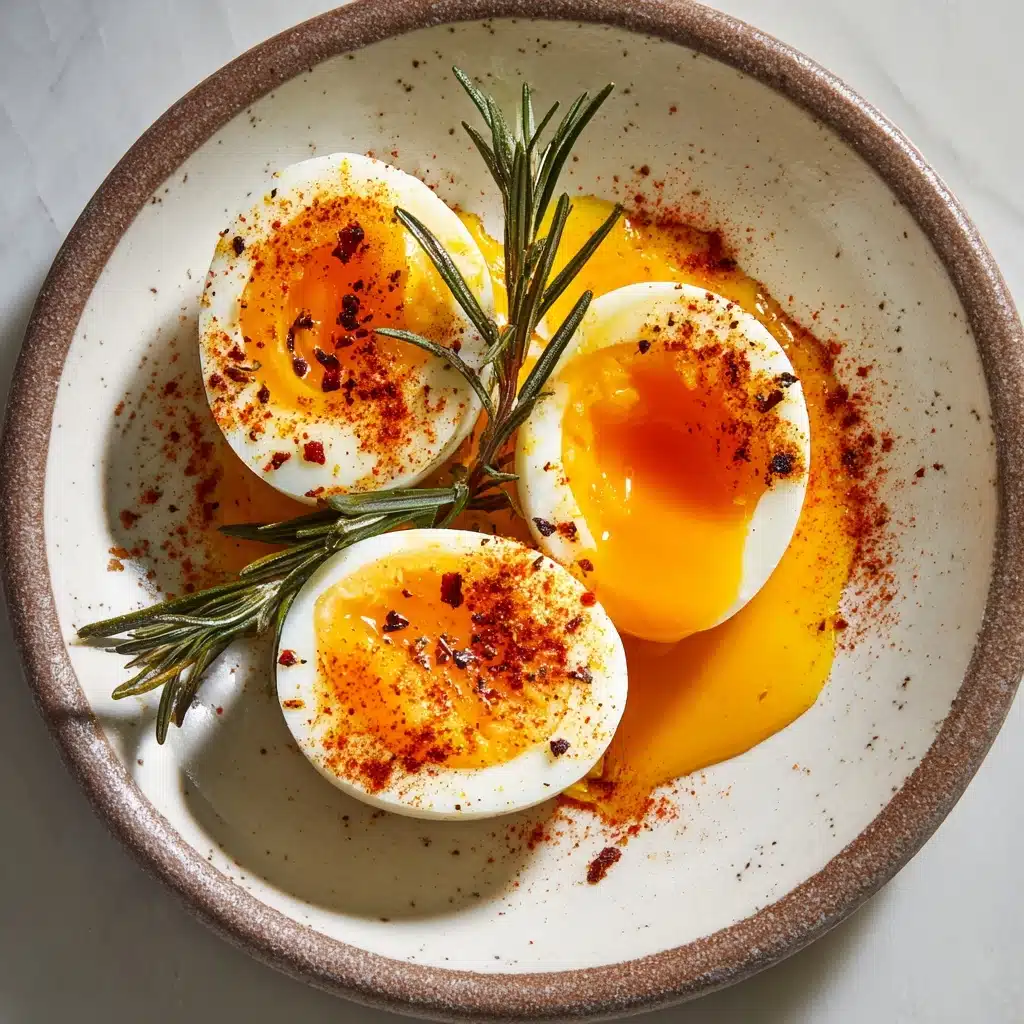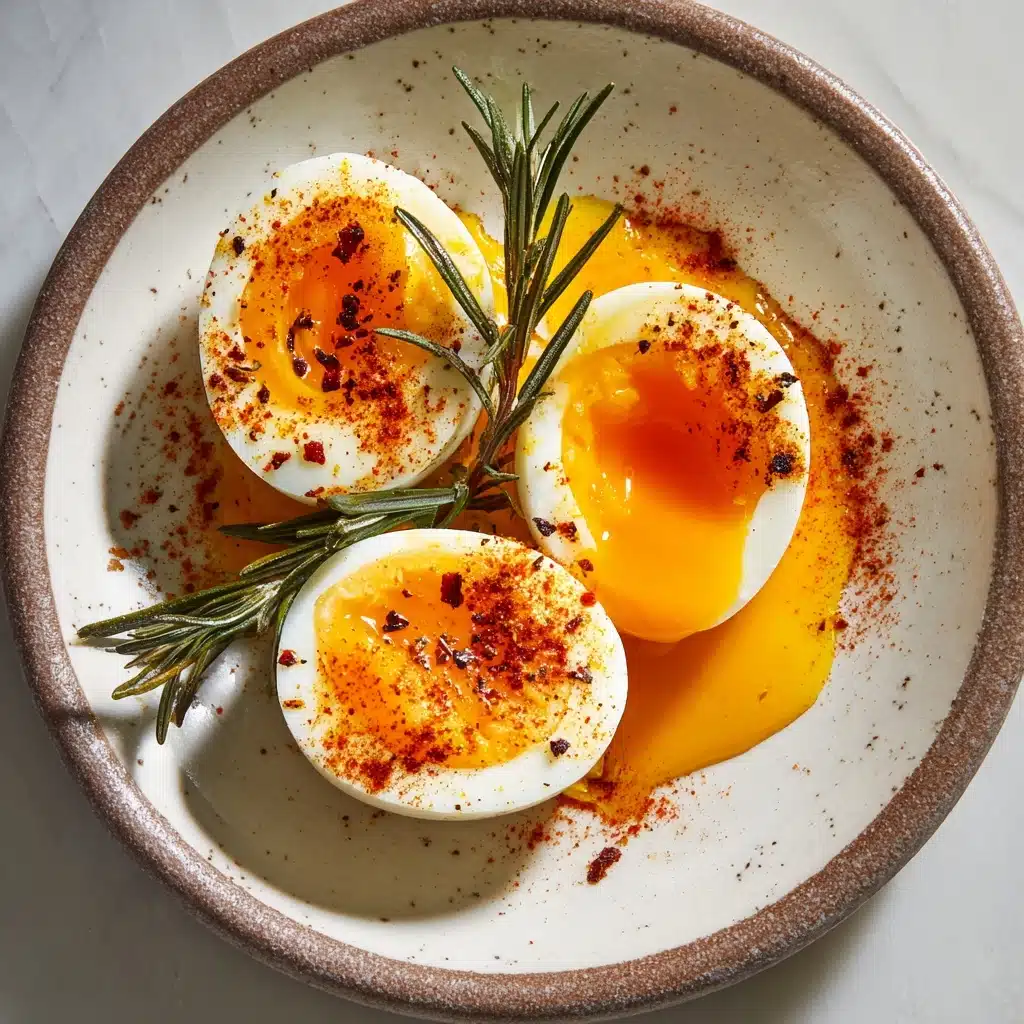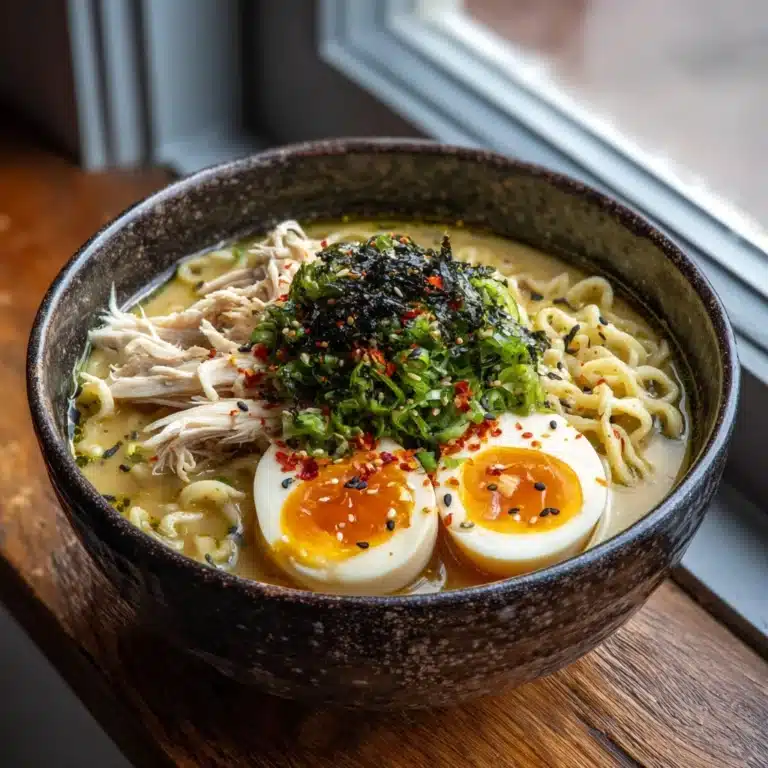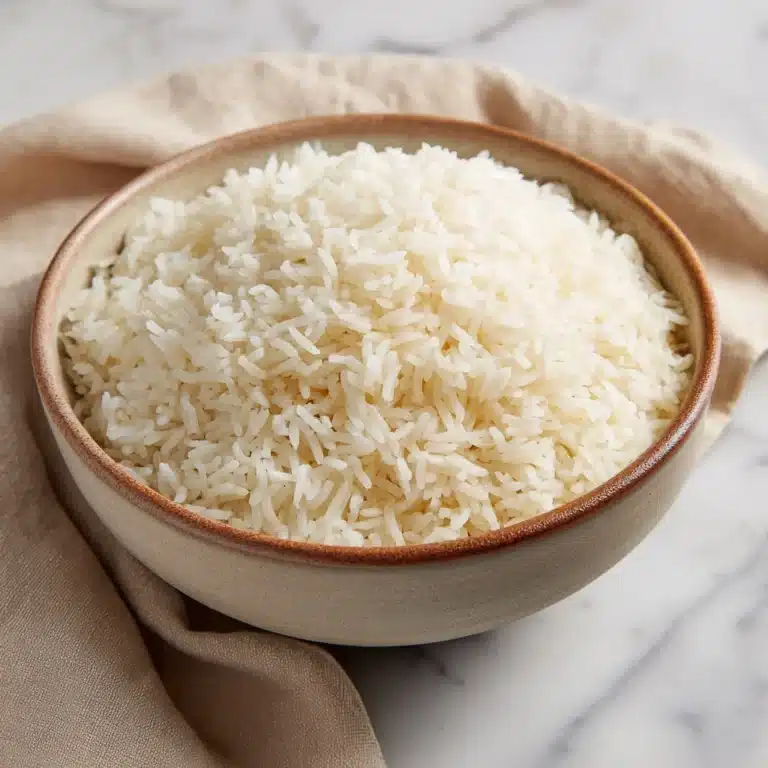Turkish Eggs (Cilbir) Recipe
Turkish Eggs (Cilbir) is the ultimate breakfast or brunch dish for anyone who loves rich, silky poached eggs paired with cool, garlicky yogurt and a dramatic drizzle of spiced butter. Each bite bursts with savory contrast—the tang of Greek yogurt, aromatic pop of fresh herbs, gentle heat from paprika, and a perfectly runny yolk that soaks into crusty bread. With origins stretching back centuries, Turkish Eggs (Cilbir) is an experience that feels both luxurious yet startlingly simple, making it a must-try whether you’re surprising guests or just treating yourself on a slow morning.

Ingredients You’ll Need
It’s amazing how a handful of basic ingredients can deliver such bold, satisfying flavors! Each component in Turkish Eggs (Cilbir) has a purpose, from the creamy yogurt base to the spicy, golden butter. Here’s everything you’ll need, along with a few tips to bring out the best in every bite.
- Greek yogurt: Thick, tangy yogurt forms the cooling, creamy foundation—full-fat is best for extra silkiness.
- Garlic: Just a clove minced into the yogurt provides gentle warmth and aroma without overpowering the dish.
- Salt: Essential seasoning that brings out the flavors in both yogurt and eggs—don’t be shy!
- Eggs: Large, fresh eggs are key for soft, cloud-like poached results with beautiful, runny yolks.
- White vinegar: Helps your egg whites set neatly while poaching—totally tasteless after cooking, but invaluable.
- Unsalted butter: The heart of the spiced sauce; choose good-quality butter for richness and depth.
- Paprika (preferably Aleppo or smoked): Aleppo pepper adds a fruity, mild heat, but smoked paprika or even red pepper flakes deliver delicious alternatives.
- Olive oil (optional): For an extra layer of flavor, swirl a touch into your spiced butter just before drizzling.
- Fresh dill or parsley: A bright herbaceous sprinkle for color and freshness right before serving.
- Crusty bread: Turkish Eggs (Cilbir) simply isn’t complete without a good loaf to mop up yogurt, yolks, and buttery sauce.
How to Make Turkish Eggs (Cilbir)
Step 1: Mix the Yogurt Base
Start by combining the Greek yogurt, minced garlic, and salt in a small bowl. Mix until smooth and creamy. This vibrant base provides a cool, tangy blanket for your eggs, and letting it rest at room temperature ensures it doesn’t chill the other components. For a gentle touch, you can even warm the yogurt slightly (just until it’s no longer cold) to create that signature cozy contrast.
Step 2: Poach the Eggs
Fill a medium saucepan with three inches of water and bring to a gentle simmer—not a full boil. Add the vinegar, which subtly helps your egg whites set into soft, neat pillows. Crack each egg into a small cup first, then carefully slide into the simmering water. Poach for three to four minutes until the whites are just set but the yolks are still gloriously runny. Gently lift out with a slotted spoon and let excess water drain on a paper towel.
Step 3: Make the Spiced Butter
In a small skillet, melt the butter over medium heat until it’s foaming and giving off a nutty aroma. Sprinkle in your paprika (or Aleppo pepper or smoked paprika) and stir for about 30 seconds. You want the spices to bloom in the hot butter but not burn! For extra flavor, swirl in olive oil at this stage if you like. This fragrant, crimson butter is the magic that ties everything together in Turkish Eggs (Cilbir).
Step 4: Assemble the Plates
Spoon the garlicky yogurt onto two plates, spreading it into a thick, inviting base. Top each plate with a gently poached egg. Now comes the showstopper: generously drizzle the spiced butter over the eggs, letting it pool and run into the yogurt. Show off by finishing with a sprinkle of fresh dill or parsley, and get your crusty bread ready for dunking.
How to Serve Turkish Eggs (Cilbir)

Garnishes
Don’t skip the finishing touches—they’re what make Turkish Eggs (Cilbir) pop off the plate! Fresh dill is classic, lending grassy freshness that offsets the richness, while parsley gives a bright, leafy flavor. Extra paprika or a pinch of red pepper flakes can up the color and heat if you crave a spicier hit.
Side Dishes
While Turkish Eggs (Cilbir) is hearty enough to shine solo, it also loves company. Pair with sliced cucumbers, juicy tomatoes, or a crisp salad for a simple Turkish-inspired brunch spread. A bowl of olives or a handful of walnuts adds Mediterranean flair, and for the ultimate indulgence, serve with more crusty bread or simit (Turkish sesame rings) for endless dipping.
Creative Ways to Present
Feeling playful? Serve Turkish Eggs (Cilbir) in small individual bowls for an elegant starter, or try nestling the yogurt and eggs inside warm pita or flatbread wraps for a portable twist. For a dinner party, assemble “egg toasts” by layering everything on thick bread slices and cutting into bite-sized squares. Guests will marvel at your presentation—and the flavor.
Make Ahead and Storage
Storing Leftovers
If you have leftovers (which is rare!), store the yogurt mixture and poached eggs separately in airtight containers in the fridge. The yogurt will keep its creamy texture for up to two days, while poached eggs are best enjoyed within a day to maintain their structure and flavor. Don’t store the spiced butter sauce—make that fresh every time.
Freezing
Freezing isn’t the best option for Turkish Eggs (Cilbir) since yogurt loses its texture and poached eggs can become rubbery once thawed. If you must, only freeze the yogurt (for up to a month), but expect some separation—stir vigorously after defrosting. Eggs and spiced butter should always be fresh.
Reheating
To reheat poached eggs, submerge them briefly in very hot (not boiling) water for 30–60 seconds to revive their warmth and softness. The yogurt base is best served at room temperature, so just let it sit out for 10–15 minutes before assembling. Whip up fresh spiced butter when you’re ready to eat—30 seconds on the stove is all it takes.
FAQs
What’s the origin of Turkish Eggs (Cilbir)?
Cilbir has been a breakfast staple in Turkey since Ottoman times, beloved for its simple ingredients that transform into something far greater than the sum of their parts. Today, it’s enjoyed from humble home kitchens to chic city cafes across Turkey and beyond.
Can I use regular yogurt instead of Greek yogurt?
Absolutely! While Greek yogurt’s thickness is ideal for Turkish Eggs (Cilbir), any plain, unsweetened yogurt will do. If yours is thin, consider draining it through a fine mesh strainer or cheesecloth for 30 minutes to recreate that lush texture.
How do I keep my poached eggs from turning out messy?
The key is gently simmering water (not a rolling boil) and a splash of vinegar, which helps the whites set quickly around the yolk. Cracking each egg into a small cup before sliding them into the water also gives you more control over placement.
Can I make this ahead for a brunch party?
Yes! You can mix the yogurt and chop the herbs in advance. Poach the eggs right before serving, or prep them a couple of hours ahead and hold them in cool water, reheating as above. The dramatic butter drizzle should always be done last for maximum color and flavor.
Is Turkish Eggs (Cilbir) gluten-free?
The dish itself is naturally gluten-free, so just swap the crusty bread for your favorite gluten-free alternative—or simply enjoy with extra veggies or a salad. Everything else stays beautifully true to tradition.
Final Thoughts
If you’re ready to give your mornings a serious upgrade, Turkish Eggs (Cilbir) is the gloriously simple, flavor-packed dish you need to try. Each forkful feels like pure breakfast luxury—share it with friends, serve it for brunch, or savor a plateful solo whenever you need a dose of Mediterranean sunshine.
Print
Turkish Eggs (Cilbir) Recipe
- Total Time: 15 minutes
- Yield: 2 servings 1x
- Diet: Vegetarian, Gluten Free
Description
Turkish Eggs, also known as Cilbir, is a traditional Middle Eastern breakfast dish featuring poached eggs on a bed of garlicky Greek yogurt, drizzled with spiced butter and fresh herbs. This recipe offers a delightful blend of flavors and textures that will elevate your morning meal.
Ingredients
For the Yogurt Mixture:
- 1 cup Greek yogurt
- 1 clove garlic, minced
- 1/4 teaspoon salt
For Poaching Eggs:
- 2 large eggs
- 1 tablespoon white vinegar
For Spiced Butter:
- 2 tablespoons unsalted butter
- 1 teaspoon paprika (preferably Aleppo pepper or smoked paprika)
- 1 tablespoon olive oil (optional)
For Serving:
- Fresh dill or parsley for garnish
- Crusty bread
Instructions
- Prepare Yogurt Mixture: In a bowl, mix Greek yogurt, minced garlic, and salt until smooth. Set aside.
- Poach Eggs: Fill a saucepan with water, bring to a simmer, add vinegar. Crack eggs into a cup, then slide into water. Poach for 3–4 minutes, until set.
- Make Spiced Butter: Melt butter in a skillet, stir in paprika, cook for 30 seconds.
- Assemble: Spread yogurt on plates, place poached eggs, drizzle with spiced butter and olive oil, garnish with herbs. Serve with bread.
Notes
- Aleppo pepper gives traditional flavor, smoked paprika or red pepper flakes can substitute.
- Warm yogurt before serving to prevent rapid cooling of eggs.
- Prep Time: 5 minutes
- Cook Time: 10 minutes
- Category: Breakfast, Brunch
- Method: Poaching, Stovetop
- Cuisine: Turkish, Middle Eastern
Nutrition
- Serving Size: 1 plate
- Calories: 260
- Sugar: 5g
- Sodium: 350mg
- Fat: 20g
- Saturated Fat: 10g
- Unsaturated Fat: 9g
- Trans Fat: 0g
- Carbohydrates: 7g
- Fiber: 0g
- Protein: 14g
- Cholesterol: 225mg







